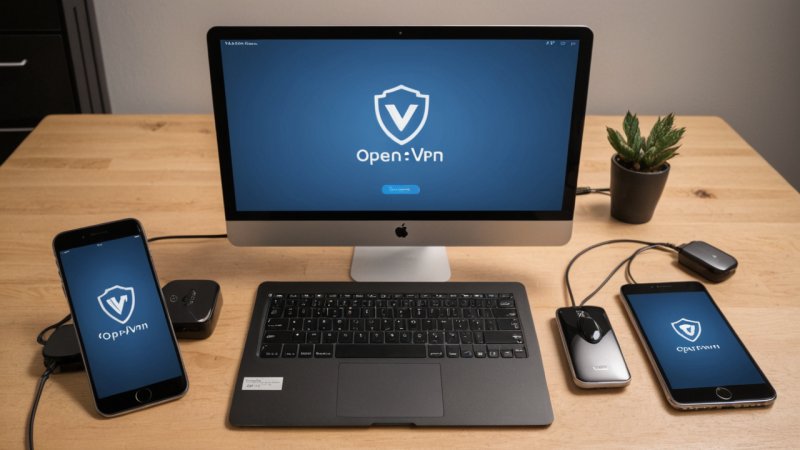In an era where online privacy and security are paramount, Virtual Private Networks (VPNs) have gained tremendous popularity. One of the most reliable and widely used VPN protocols is OpenVPN, known for its flexibility and high-security standards. Setting up a VPN using the OpenVPN protocol may seem daunting to many, but with the right guidance, you can easily safeguard your internet connection and enhance your online anonymity. In this article, we will delve into the essentials of OpenVPN, its benefits, and provide you with a step-by-step guide to setting it up, ensuring a secure digital experience.
Understanding OpenVPN: What is it?
OpenVPN is an open-source VPN protocol that utilizes a custom security protocol based on SSL/TLS for key exchange. It is designed to provide a secure point-to-point or site-to-site connection in routed or bridged configurations, while allowing through NAT (Network Address Translation) and firewalls. Its open-source nature means that it is constantly being reviewed and improved by a community of developers, making it one of the most secure options available.
Benefits of Using OpenVPN
OpenVPN offers several benefits that make it a preferred choice for both individuals and organizations:
- High Security: OpenVPN supports various encryption methods, including AES-256, which is known for its strength against brute-force attacks.
- Flexibility: It can run on various platforms, from Windows and macOS to Linux, Android, and iOS, allowing users to connect across different devices.
- Bypass Restrictions: OpenVPN can help users bypass geo-restrictions and censorship, making it a valuable tool in regions with heavy internet surveillance.
- Community Support: Being open-source, OpenVPN has a vast community of users and developers who contribute to its ongoing development and support.
Requirements for Setting Up OpenVPN
Before you begin the setup process, ensure that you have the following:
- A server: You can use a dedicated server, a virtual private server (VPS), or a cloud service provider.
- OpenVPN software: Download the OpenVPN software from the official website.
- Access to the server: You need SSH access to the server to configure OpenVPN.
- Basic command-line knowledge: Familiarity with command-line interface (CLI) commands will help you navigate the setup process more efficiently.
Step-by-Step Guide to Setting Up OpenVPN
1. Install OpenVPN on the Server
The first step in setting up OpenVPN is to install the software on your server. Depending on your server's operating system, the installation process will vary. For example, if you are using Ubuntu, you would run the following commands:
sudo apt-get update
sudo apt-get install openvpn2. Configure the OpenVPN Server
After installation, you need to configure the OpenVPN server. This involves creating a configuration file that defines the server’s settings. You can typically find sample configuration files within the OpenVPN installation directory. Copy one of these examples to the OpenVPN directory and modify it according to your needs:
sudo cp /usr/share/doc/openvpn/examples/sample-config-files/server.conf.gz /etc/openvpn/
sudo gzip -d /etc/openvpn/server.conf.gz
sudo nano /etc/openvpn/server.confIn the configuration file, you will need to specify settings such as the protocol (UDP or TCP), port (default is 1194), and the paths to your encryption keys and certificates.
3. Set Up Security Keys and Certificates
Security keys and certificates are essential for establishing a secure connection. You can use the EasyRSA tool to generate these keys. First, install EasyRSA:
sudo apt-get install easy-rsaThen, initialize the PKI (Public Key Infrastructure) and generate the server and client certificates:
make-cadir ~/openvpn-ca
cd ~/openvpn-ca
source vars
./clean-all
./build-ca
./build-key-server server
./build-dh
openvpn --genkey --secret keys/ta.key4. Start the OpenVPN Server
Once you have configured the server and generated the necessary keys, you can start the OpenVPN service:
sudo systemctl start openvpn@serverTo ensure that OpenVPN starts at boot, run:
sudo systemctl enable openvpn@server5. Configure the Client
Now that the server is configured, you need to set up the client. You will need to install the OpenVPN client application on your device. After installation, create a client configuration file, similar to the server configuration, and include the server's IP address and necessary certificates.
6. Test the Connection
After configuring the client, you can test the connection by running the OpenVPN client and checking whether you can connect to the server. You can verify the connection by checking your IP address and ensuring it reflects the VPN server's IP.
Case Study: OpenVPN in Action
Many businesses have adopted OpenVPN for their secure remote access needs. For instance, a multinational corporation dealing with sensitive client data opted for OpenVPN to allow its employees to access the company’s internal network securely from various locations worldwide. By implementing OpenVPN, the organization ensured that their data remained encrypted and protected from potential cyber threats, thus safeguarding their reputation and client trust.
Conclusion
Setting up a VPN using the OpenVPN protocol may seem complex, but by following the steps outlined in this article, you can establish a secure and private connection to the internet. The high level of security provided by OpenVPN, combined with its flexibility and community support, makes it an ideal choice for users looking to protect their online activity. Whether for personal use or as part of a larger organizational strategy, implementing OpenVPN can significantly enhance your digital security.






